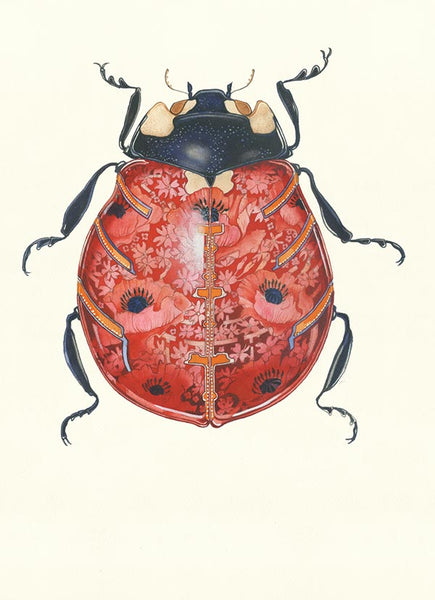Why are ladybirds called ladybirds?

This design is available as a card or print.
Ladybirds are named after The Virgin Mary. The name originated in Britain with, "Our lady's bird". There doesn't seem anything concrete to illustrate why there is this association. Some say it's because Mary is often wearing red in "early paintings”. However she also seemed fond of blue! The seven black spots on the ladybird's shell are said to represent Mary's seven joys and sorrows.
In an age of faith, you can see how an association with Christ's mother might come about. Medieval people used to think that earth mirrored heaven, the ladybird was thought to be a symbol of our lady, and because the ladybird eats pests (most notably aphids) she was seen as a protector of people and their food supply.
It is amazing that the association with Our Lady goes across borders. In England its "Our Lady's Bird"; in Germany, "Mary's chicken"; in France, "God's Animal"; and in Spanish, "Gods little cow".
Why is this? Well maybe it's because folk living in rural areas would have all known that other animals leave the ladybird well alone. It produces a nasty yellowish fluid which it discharges in time of danger! Therefore it goes about its business unmolested. One might be forgiven for thinking there was some divine protection at play here.
In conclusion, people may have seen a similarity in the creature's charmed life to the preservation of Our Lady from sin.
See my ladybird design available as a greetings card and art print
And the others in the DM Bugs and Butterflies collection
Image © Daniel Mackie
